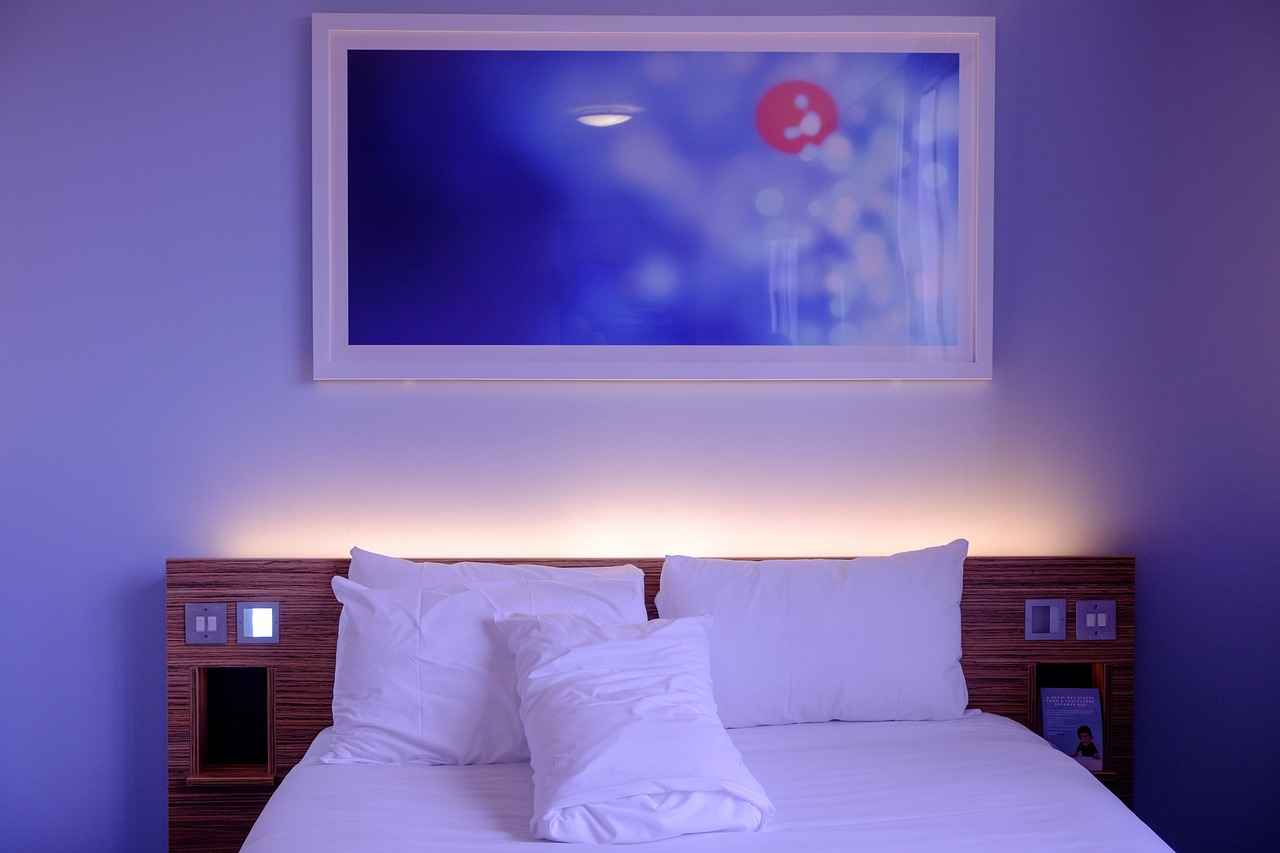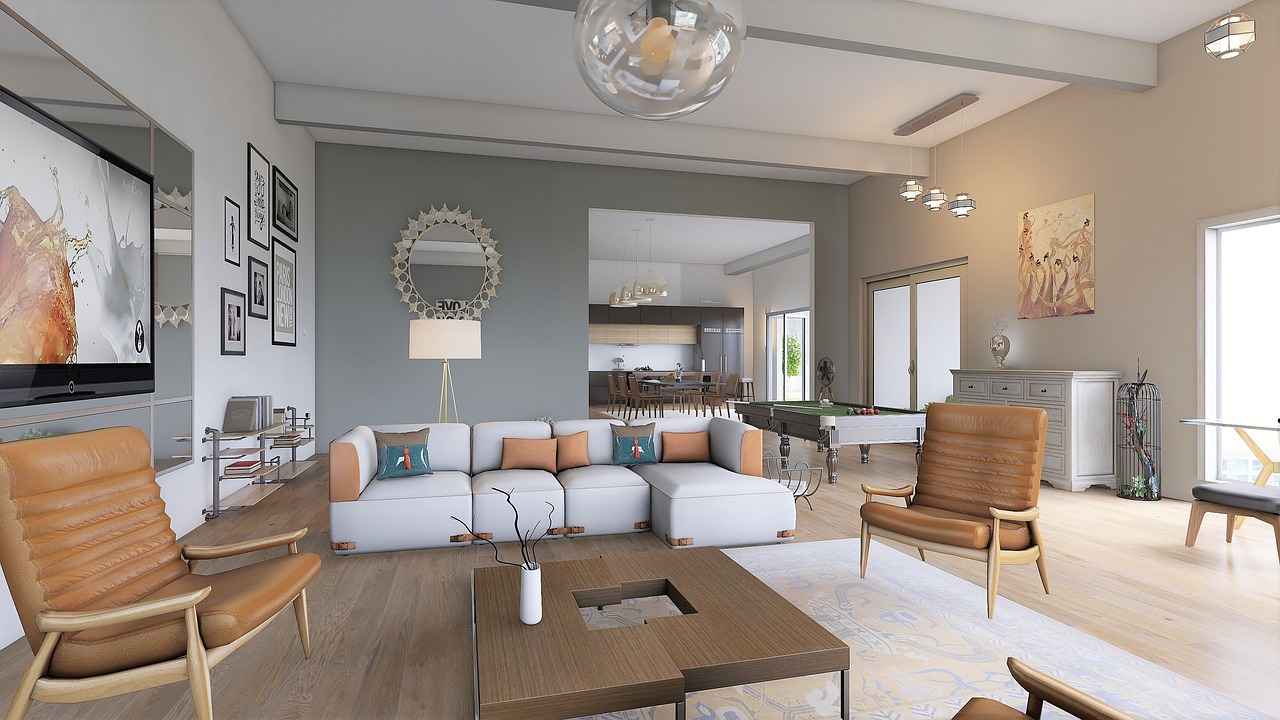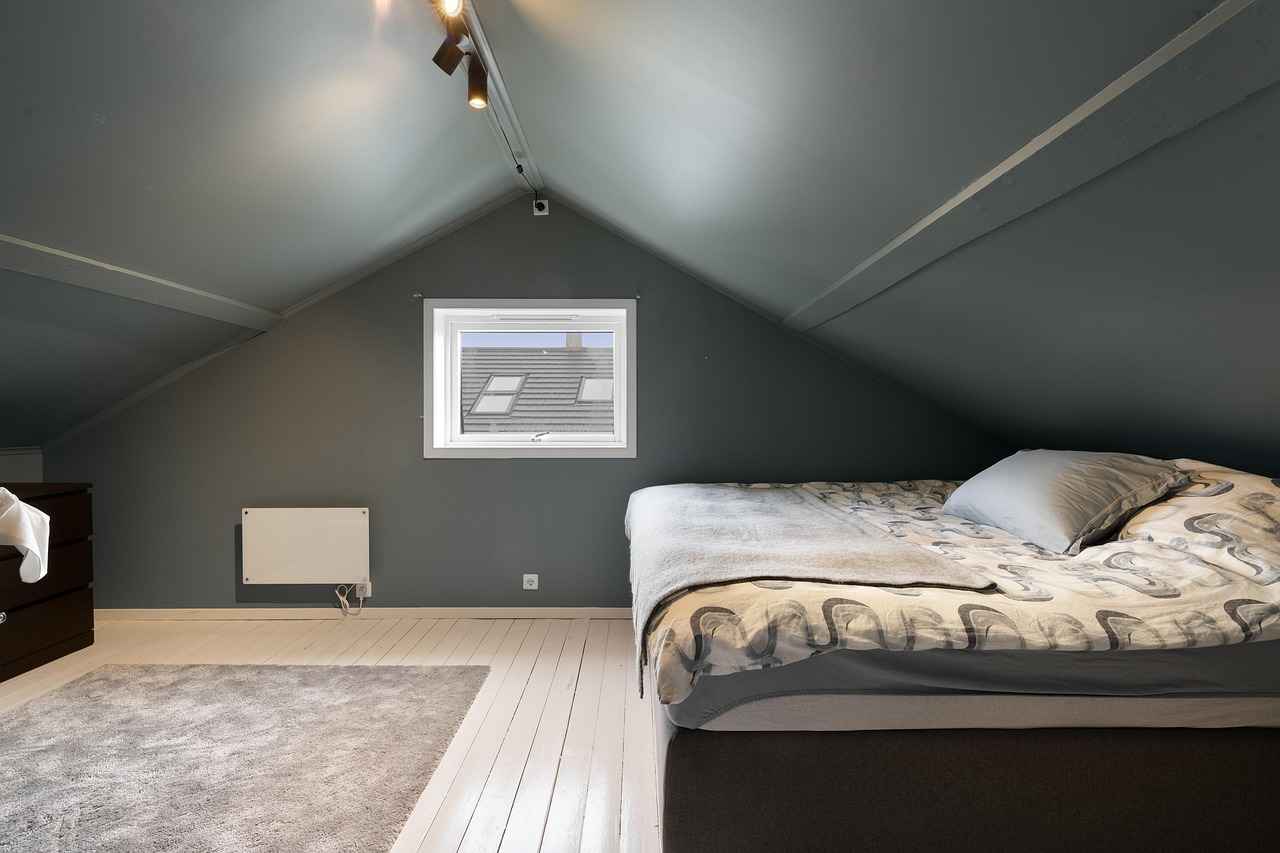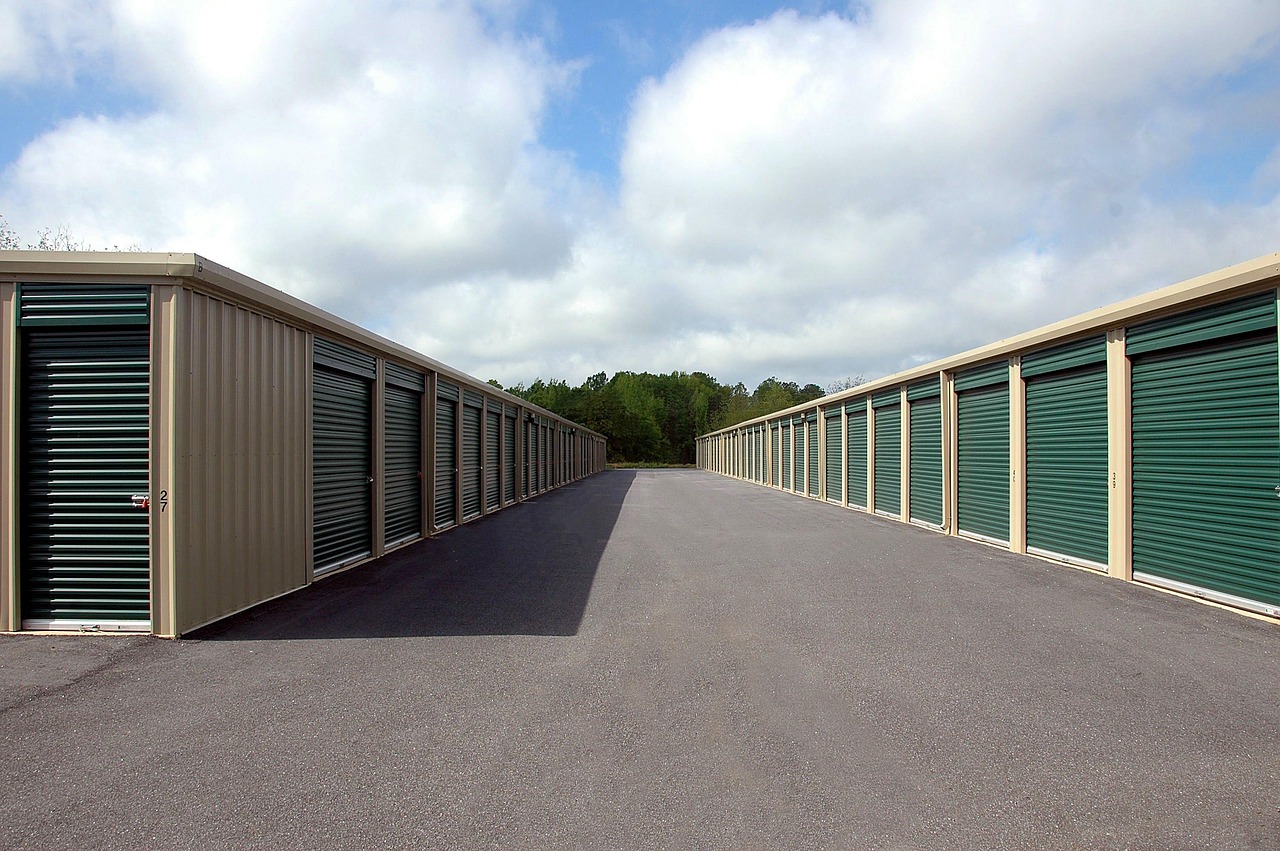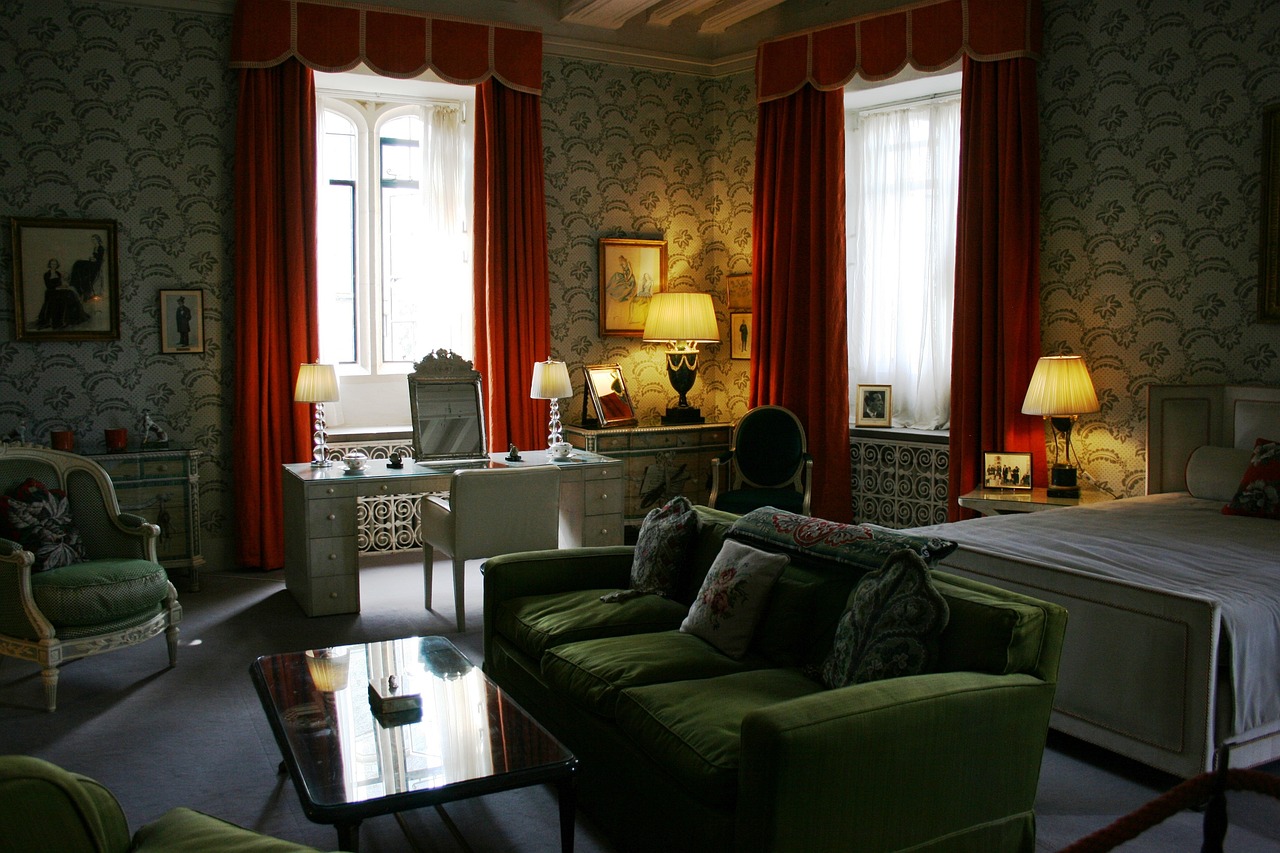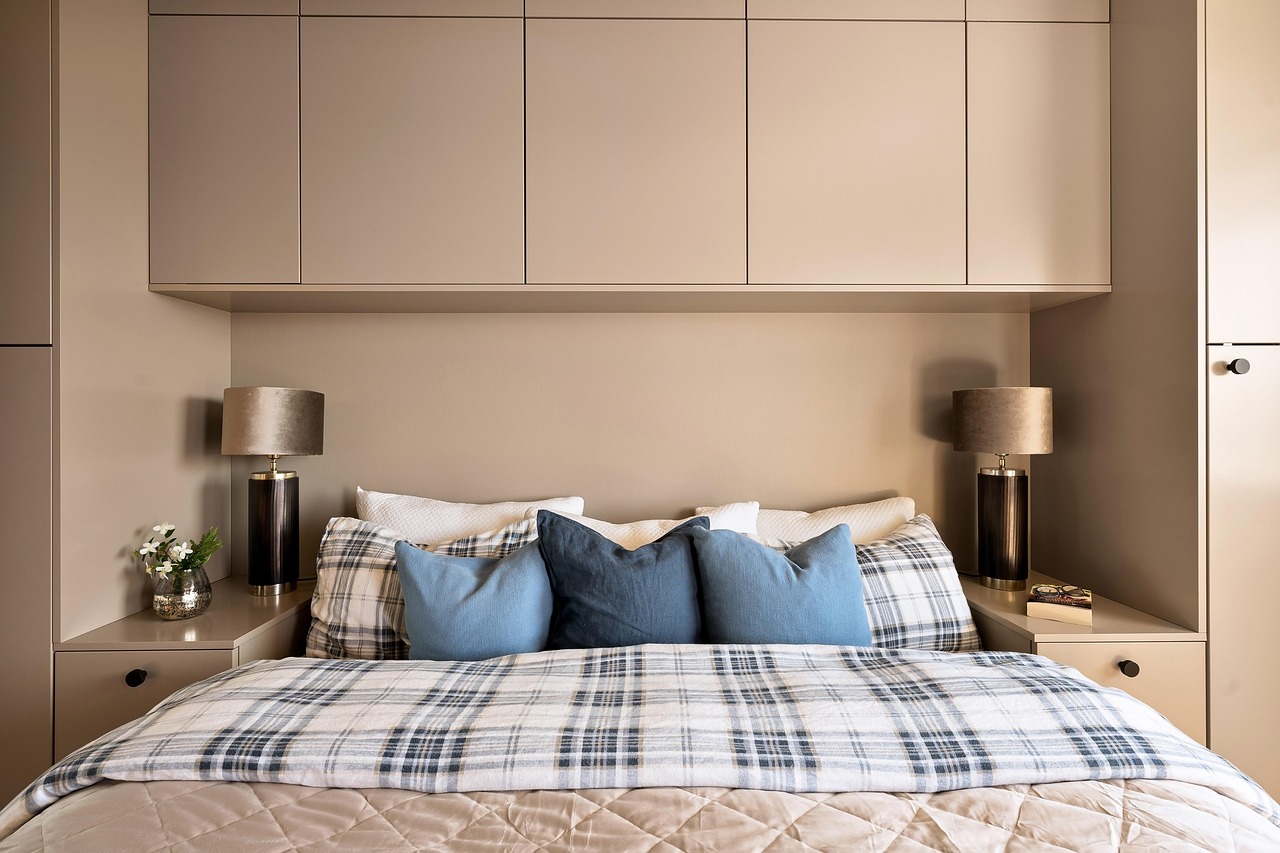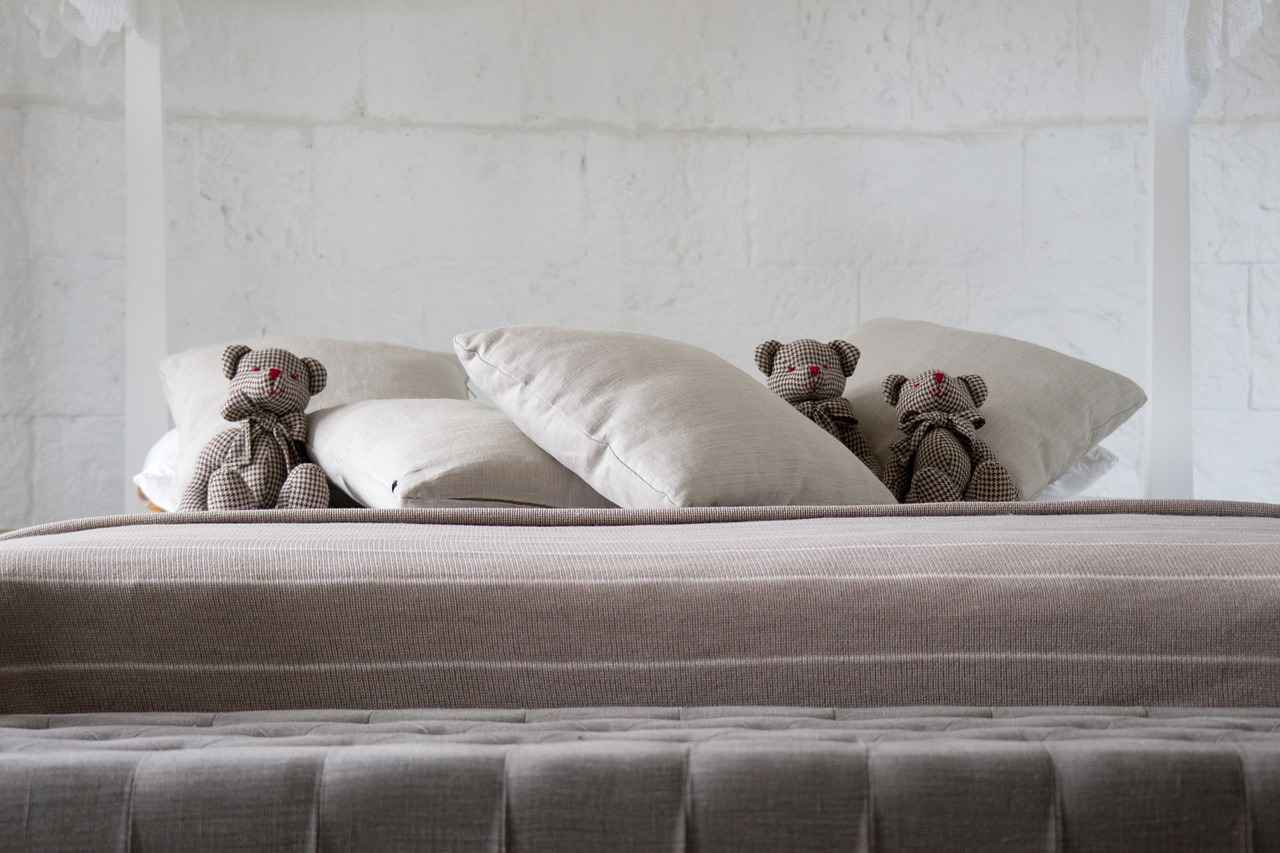This article explores the enduring appeal of wooden bed designs, highlighting various styles, materials, and practical tips for choosing the perfect wooden bed for your home.
1. The Timeless Appeal of Wooden Beds
Wooden beds have a classic aesthetic that complements various interior designs, making them a versatile choice for any bedroom. Their natural beauty and durability contribute to their lasting popularity.
2. Types of Wood Used in Bed Designs
Different types of wood offer unique characteristics and aesthetics for bed designs. Understanding these differences can help you choose the right wood for your style and needs.
- Hardwoods vs. Softwoods
- Benefits of Hardwoods: Known for their durability and resistance to wear, making them ideal for high-quality bed frames that can last for generations.
- Advantages of Softwoods: Typically easier to work with and can be finished in various styles, making them a popular choice for budget-friendly wooden beds.
- Eco-Friendly Wood Options: Sustainable wood sources, such as bamboo and reclaimed wood, provide environmentally friendly options for those looking to minimize their ecological footprint while enjoying beautiful wooden beds.
3. Popular Wooden Bed Styles
From rustic to modern designs, wooden beds come in a variety of styles that can enhance your bedroom’s overall aesthetic. Understanding these styles can help you find the perfect fit.
- Rustic Wooden Beds: Often feature natural finishes and a rugged appearance, creating a cozy and inviting atmosphere in any bedroom.
- Modern Wooden Bed Designs: Focus on clean lines and minimalistic designs, often incorporating innovative features for functionality and style.
4. Choosing the Right Size for Your Wooden Bed
Selecting the appropriate size for your wooden bed is crucial for comfort and space management. Considerations include room dimensions and personal preferences for sleeping arrangements.
| Bed Size | Dimensions |
|---|---|
| Twin | 38″ x 75″ |
| Full | 54″ x 75″ |
| Queen | 60″ x 80″ |
| King | 76″ x 80″ |
5. Finishes and Stains: Enhancing Wooden Beds
The finish or stain applied to wooden beds can enhance their appearance and protect the wood. Various options are available to suit different styles and preferences.
- Natural Finishes: Highlight the wood’s grain and color, providing a warm and organic look that complements rustic and traditional designs.
- Painted and Stained Finishes: Allow for more customization, enabling you to match your bed to your existing decor or create a bold statement piece.
6. Maintenance Tips for Wooden Beds
Proper maintenance is essential to prolong the life of your wooden bed. Regular cleaning and care can keep your bed looking beautiful for years to come.
- Cleaning Wooden Beds: Using gentle cleaning solutions and soft cloths can help maintain the wood’s finish without causing damage or wear.
- Repairing Scratches and Dents: Minor scratches and dents can be repaired easily with wood fillers or touch-up pens, ensuring your bed maintains its pristine appearance.
Conclusion: The Enduring Charm of Wooden Beds
Wooden beds remain a classic choice for any bedroom, combining beauty, durability, and versatility. By exploring various styles and options, you can find the perfect wooden bed that complements your home.
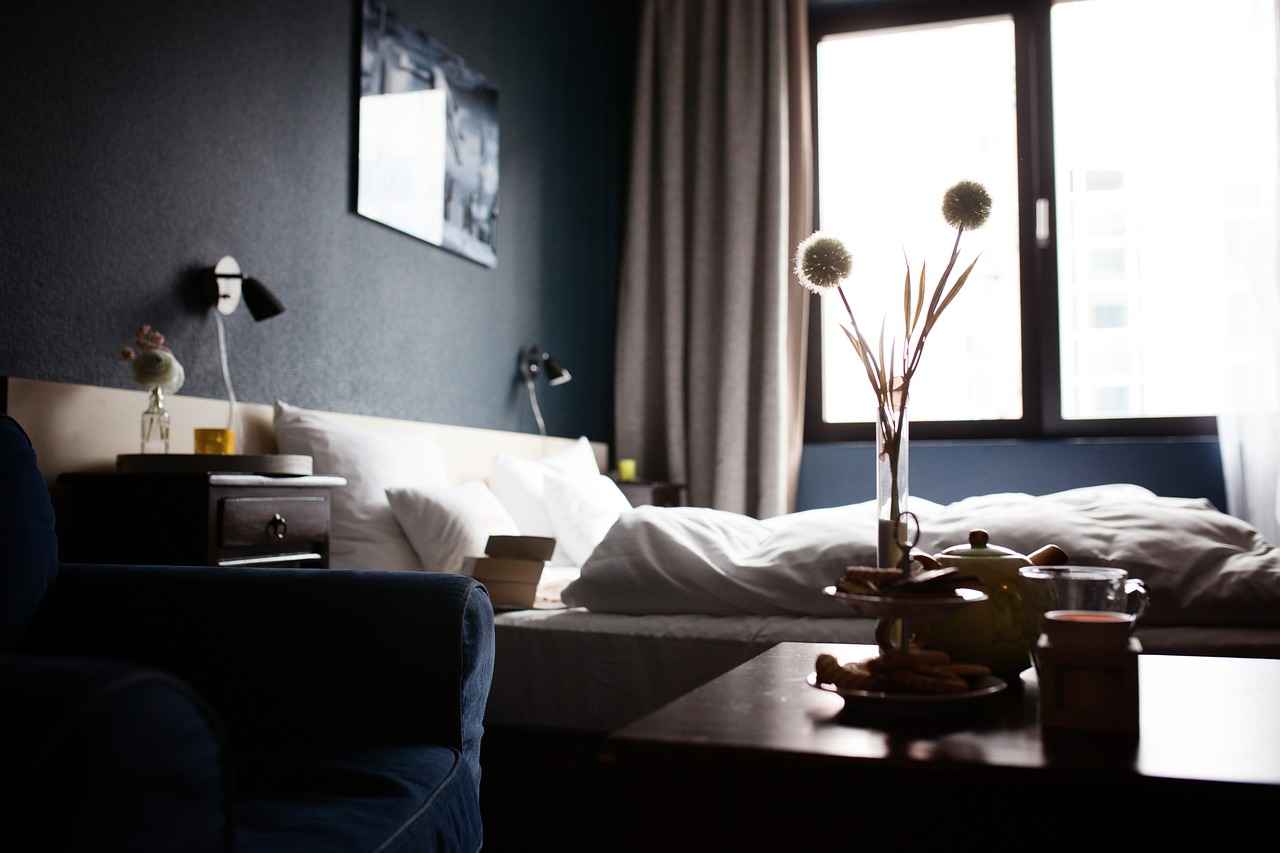
1. The Timeless Appeal of Wooden Beds
Wooden beds have long been celebrated for their timeless charm and versatility in interior design. Their natural warmth and aesthetic appeal make them a popular choice for a wide range of bedroom styles, from traditional to contemporary. The enduring popularity of wooden beds can be attributed to their ability to seamlessly blend into various decor themes while providing a sense of comfort and stability.
One of the key reasons for the timeless appeal of wooden beds is their durability. High-quality wooden frames are built to last, often becoming cherished pieces that can be passed down through generations. Unlike metal or upholstered beds, wooden beds can withstand daily wear and tear, maintaining their beauty and structural integrity over time.
Moreover, wooden beds come in a variety of styles and finishes, allowing homeowners to choose options that best reflect their personal taste. From the rustic charm of reclaimed wood to the sleek lines of modern designs, there is a wooden bed to suit every aesthetic preference. The natural grain of wood adds a unique character to each piece, ensuring that no two beds are exactly alike.
In addition to their aesthetic and durability, wooden beds also offer practical benefits. Many designs feature built-in storage solutions, such as drawers or shelves, maximizing space in smaller bedrooms. This functionality, combined with their classic look, makes wooden beds a smart investment for any home.
Ultimately, the timeless appeal of wooden beds lies in their ability to enhance the overall ambiance of a bedroom while providing comfort and durability. As trends in home decor continue to evolve, wooden beds remain a constant favorite, proving that classic design never goes out of style.

2. Types of Wood Used in Bed Designs
Understanding the various types of wood used in bed designs is essential for making an informed decision that aligns with your personal style and practical needs. Each wood type brings its own unique characteristics, aesthetics, and advantages to the table, influencing both the look and durability of your bed frame.
When it comes to wooden beds, the choice of wood can significantly affect the overall design and functionality. Here, we explore several popular types of wood, emphasizing their unique properties and how they can enhance your bedroom’s aesthetic.
- Hardwoods: Hardwoods, such as oak, maple, and walnut, are known for their strength and longevity. These woods are dense and durable, making them ideal for high-quality bed frames that can withstand daily use.
- Softwoods: Softwoods, like pine and cedar, are typically lighter and more affordable. They are easier to work with and can be finished in various styles, making them a popular choice for budget-friendly wooden beds.
- Exotic Woods: For those looking to make a statement, exotic woods such as teak and mahogany offer stunning visual appeal and unique grain patterns. These woods can elevate the design of any bed, adding a touch of luxury.
- Reclaimed Wood: Sustainable and eco-friendly, reclaimed wood is sourced from old buildings or furniture. This type of wood not only has a rich history but also adds character and warmth to your bed design.
- Bamboo: As a rapidly renewable resource, bamboo has gained popularity for its sustainability. It is lightweight, strong, and offers a modern aesthetic, making it an excellent choice for contemporary bed designs.
Choosing the right type of wood for your bed design is crucial. Consider factors such as durability, aesthetics, and budget to find the perfect match for your bedroom. Each wood type can provide a unique charm, ensuring that your bed is not only a place for rest but also a beautiful focal point in your home.
2.1. Hardwoods vs. Softwoods
Hardwoods and softwoods are two primary categories of timber used in the construction of wooden beds, each offering distinct characteristics and benefits that cater to different preferences and needs.
Hardwoods, such as oak and maple, are renowned for their exceptional strength and durability. These woods are sourced from deciduous trees that lose their leaves annually, resulting in a dense grain structure that provides longevity. Beds made from hardwoods are often seen as a long-term investment, as they resist wear and tear, making them ideal for daily use. Additionally, hardwoods can withstand significant weight, ensuring stability and support for various mattress types.
On the other hand, softwoods, like pine and cedar, are typically more affordable and lightweight, making them an attractive option for budget-conscious consumers. Softwoods come from coniferous trees, which tend to grow faster than hardwoods, leading to lower costs. Their lighter weight makes them easier to move and handle, which is particularly beneficial for those who frequently rearrange their living spaces. However, softwoods may not offer the same level of durability as hardwoods, making them more suitable for temporary or less frequently used beds.
| Feature | Hardwoods | Softwoods |
|---|---|---|
| Durability | High | Moderate |
| Weight | Heavy | Light |
| Cost | Higher | Lower |
| Common Types | Oak, Maple | Pine, Cedar |
In conclusion, the choice between hardwoods and softwoods ultimately depends on your specific needs and budget. If you’re looking for a bed that offers strength and longevity, hardwoods may be the way to go. However, if you’re seeking a more affordable and lightweight option, softwoods can provide a practical solution for various bed designs.
2.1.1. Benefits of Hardwoods
Benefits of Hardwoods
When it comes to selecting the perfect material for bed frames, hardwoods stand out for several compelling reasons. Known for their inherent strength and durability, hardwoods such as oak, maple, and cherry are ideal choices for bed frames that are designed to last a lifetime.
- Durability: Hardwoods are exceptionally tough and resistant to wear and tear. This makes them less likely to warp or crack over time, ensuring that your bed frame remains sturdy and functional for years.
- Timeless Aesthetic: The natural beauty of hardwoods adds an elegant touch to any bedroom decor. Their rich grains and colors can enhance the overall aesthetic, making them a popular choice for both traditional and modern designs.
- Investment Value: While hardwood beds may come with a higher initial cost, their longevity and durability often translate to better long-term value. A well-crafted hardwood bed frame can serve you for generations, making it a worthwhile investment.
- Eco-Friendly Options: Many hardwoods are sourced from sustainable forests, allowing you to make an environmentally conscious choice without sacrificing quality or style.
- Ease of Maintenance: Hardwoods are relatively easy to maintain. Regular cleaning and occasional polishing can keep them looking new, while their resistance to stains and scratches further simplifies upkeep.
In conclusion, choosing a hardwood bed frame not only ensures a sturdy and long-lasting piece of furniture but also adds a touch of elegance to your bedroom. With their numerous benefits, hardwoods are undoubtedly a top choice for anyone looking to invest in quality.
2.1.2. Advantages of Softwoods
Advantages of Softwoods
Softwoods, derived from coniferous trees such as pine, cedar, and fir, offer several benefits that make them an attractive choice for wooden bed designs. These advantages not only enhance the aesthetic appeal but also provide practical benefits that cater to various consumer needs.
- Ease of Workability: Softwoods are generally easier to cut, shape, and assemble compared to hardwoods. This workability allows craftsmen to create intricate designs and styles, making them ideal for custom bed frames.
- Cost-Effectiveness: One of the primary advantages of softwoods is their affordability. They are often less expensive than hardwoods, making them an excellent option for budget-conscious consumers who still want quality wooden beds.
- Lightweight Nature: Softwoods are lighter than hardwoods, which makes them easier to move and rearrange. This is particularly beneficial for individuals who frequently change their bedroom layout or for those who may want to relocate their beds.
- Versatile Finishing Options: Softwoods can be easily stained or painted, allowing for a variety of finishes that can match any interior decor. This flexibility enables homeowners to personalize their wooden beds to fit their unique style.
- Natural Insulation: Softwoods possess natural insulating properties, which can help maintain a comfortable temperature in the bedroom. This can contribute to a more restful sleep environment.
In conclusion, the advantages of softwoods make them a popular choice for wooden bed designs. Their affordability, ease of workability, and versatility not only cater to diverse aesthetic preferences but also enhance the overall functionality of bedroom furniture. Whether you are looking for a simple design or a more elaborate one, softwoods provide a practical solution that meets both style and budget considerations.
2.2. Eco-Friendly Wood Options
Eco-Friendly Wood Options are becoming increasingly important in today’s environmentally conscious world. Many individuals are seeking ways to furnish their homes sustainably, and wooden beds made from sustainable sources are a fantastic choice. This section will delve into the benefits of using eco-friendly materials, such as bamboo and reclaimed wood, while also exploring their aesthetic and functional advantages.
- Bamboo: Bamboo is a rapidly renewable resource, known for its strength and flexibility. Its growth rate far surpasses that of traditional hardwoods, making it an excellent sustainable option. Bamboo beds offer a modern look and are often lighter than their hardwood counterparts.
- Reclaimed Wood: Reclaimed wood is sourced from old buildings, furniture, and other structures, giving new life to materials that would otherwise go to waste. This not only reduces the demand for new lumber but also adds a unique character to each piece, as the wood often carries a rich history.
Choosing eco-friendly wood options not only contributes to a healthier planet but also enhances the aesthetic appeal of your bedroom. Beds made from these materials often feature beautiful grain patterns and textures that can complement various decor styles, from rustic to contemporary.
Moreover, sustainable wood sources are typically free from harmful chemicals and finishes, promoting better indoor air quality. This is particularly important for those with allergies or sensitivities. By opting for beds made from bamboo or reclaimed wood, you can enjoy peace of mind knowing that your choice supports environmental sustainability while providing a stylish and durable addition to your home.
In conclusion, selecting eco-friendly wood options like bamboo and reclaimed wood for your wooden bed not only minimizes your ecological footprint but also offers a beautiful and unique design element. As more consumers become aware of the impact of their choices, the demand for these sustainable materials continues to grow, making them a wise investment for the future.

3. Popular Wooden Bed Styles
Wooden beds are not just furniture; they are a statement of style and comfort. With a myriad of options available, understanding the various popular wooden bed styles can significantly enhance your bedroom’s aesthetic. This guide will explore some of the most sought-after designs, helping you choose the perfect bed that aligns with your personal taste and the overall decor of your space.
- Rustic Wooden Beds: These beds are characterized by their natural finishes and rugged appearance. Often made from reclaimed wood, rustic beds create a warm and inviting atmosphere, perfect for those who appreciate a cozy, homey feel.
- Modern Wooden Beds: Emphasizing clean lines and minimalism, modern wooden beds often incorporate innovative features such as built-in storage. These designs are ideal for contemporary spaces, offering both style and functionality.
- Traditional Wooden Beds: With intricate carvings and classic designs, traditional wooden beds bring a sense of elegance and sophistication to a bedroom. They often feature ornate headboards and footboards that can serve as focal points in the room.
- Platform Beds: Low to the ground, platform beds provide a sleek, modern look. They are designed to support mattresses without the need for a box spring, making them a practical choice for those who prefer a minimalist aesthetic.
- Canopy Beds: For a touch of romance and luxury, canopy beds are an excellent choice. These beds feature posts at each corner, allowing you to drape fabric for a dreamy, elegant look, perfect for creating a serene retreat.
When selecting a wooden bed, consider the style that resonates with your personal taste and complements your bedroom decor. Each style offers unique features and benefits, ensuring that you can find a bed that is not only beautiful but also functional.
In conclusion, exploring the various popular wooden bed styles can help you make an informed decision that enhances your bedroom’s overall aesthetic. Whether you prefer the rustic charm of reclaimed wood or the sleek lines of modern design, there is a wooden bed style that will perfectly suit your needs.
3.1. Rustic Wooden Beds
Rustic Wooden Beds are a delightful choice for those looking to infuse their bedrooms with a sense of warmth and charm. These beds often showcase the natural beauty of wood, featuring unique grains and textures that add character to any space. The rugged appearance of rustic wooden beds creates a cozy atmosphere, making them perfect for both traditional and contemporary interiors.
One of the defining features of rustic wooden beds is their natural finishes. Unlike polished or glossy surfaces, these beds retain a more organic look, often highlighting the wood’s imperfections and knots. This approach not only enhances the aesthetic appeal but also contributes to a more inviting and homely feel. Many rustic designs incorporate reclaimed wood, which not only adds to the bed’s charm but also promotes sustainability.
In terms of design, rustic wooden beds often come with sturdy frames and may include features like slatted headboards or footboards that emphasize their handcrafted nature. These elements not only provide visual interest but also enhance the overall durability of the bed. The robust construction ensures that these beds can withstand the test of time, making them a wise investment for any homeowner.
When considering a rustic wooden bed, it is essential to think about the size and style that best fits your bedroom. Rustic beds can range from simple, minimalist designs to more elaborate, ornate styles. The choice of wood also plays a crucial role; options like oak, pine, and cedar each bring their own unique qualities and aesthetic to the design.
In conclusion, rustic wooden beds are not just furniture; they are a statement of style and comfort. Their ability to create a warm and inviting space makes them a popular choice among homeowners looking to enhance their bedroom’s ambiance. Whether you prefer a more traditional look or a modern twist, there is a rustic wooden bed out there that will perfectly suit your needs.
3.2. Modern Wooden Bed Designs
Modern Wooden Bed Designs are a testament to the evolution of furniture aesthetics, focusing on clean lines and minimalistic designs. These beds not only serve as a practical sleeping solution but also elevate the overall ambiance of a bedroom. With an emphasis on functionality and style, modern wooden beds incorporate innovative features that cater to contemporary living.
One of the key characteristics of modern wooden bed designs is their versatility. They can seamlessly blend into various interior styles, from Scandinavian to industrial. The use of natural wood finishes enhances the warmth and inviting atmosphere of a bedroom, while the sleek lines contribute to a clutter-free environment. Many modern designs also feature built-in storage solutions, such as drawers or shelves, making them ideal for smaller spaces.
- Innovative Features: Many modern wooden beds come equipped with adjustable headboards, integrated lighting, or even USB ports, catering to the needs of today’s tech-savvy consumers.
- Eco-Friendly Options: With a growing focus on sustainability, many manufacturers are offering beds made from reclaimed wood or sustainably sourced materials, appealing to environmentally conscious buyers.
- Customizable Designs: The ability to customize finishes and sizes allows homeowners to create a unique piece that perfectly fits their style and space.
Furthermore, the color palette for modern wooden beds ranges from light, natural tones to darker, more dramatic finishes. This variety allows for easy integration into existing decor. The trend towards minimalism emphasizes the beauty of simplicity, where less is often more.
In conclusion, modern wooden bed designs represent a perfect blend of style, functionality, and innovation. They not only provide a comfortable sleeping area but also serve as a focal point in the bedroom, enhancing the overall aesthetic and functionality of the space.

4. Choosing the Right Size for Your Wooden Bed
Choosing the Right Size for Your Wooden Bed is an essential aspect of creating a comfortable and functional bedroom space. The right bed size not only enhances your sleep quality but also optimizes the available space in your room. Below, we explore various factors to consider when selecting the perfect size for your wooden bed.
- Room Dimensions: Measure your bedroom to understand the available space. Consider not just the length and width of the room but also the height, as it can affect the overall feel.
- Personal Preferences: Think about your sleeping habits. Do you prefer more space to stretch out, or are you comfortable in a cozier setting? Your personal preference plays a significant role in your choice.
- Standard Bed Sizes: Familiarize yourself with standard bed sizes such as twin, full, queen, and king. Each size offers different benefits based on your needs and room size.
- Future Considerations: If you anticipate changes in your living situation, such as moving in with a partner or needing more space for guests, consider a larger size bed to accommodate these changes.
- Furniture Layout: Visualize how the bed will fit with other furniture in the room. Ensure there is ample space to move around comfortably and that the bed does not overpower the room.
For those with unique spaces, custom bed sizes can be designed to fit specific dimensions, ensuring optimal usage of your bedroom area. Collaborating with a skilled carpenter can help you create a bespoke wooden bed that reflects your personal style and meets your specific needs.
In conclusion, selecting the right size for your wooden bed is crucial for maximizing comfort and enhancing the overall aesthetic of your bedroom. By considering factors like room dimensions, personal preferences, and future needs, you can make an informed decision that will serve you well for years to come.
4.1. Standard Bed Sizes Explained
Understanding standard bed sizes is essential for anyone looking to furnish their bedroom effectively. The dimensions of beds can significantly impact the comfort and overall layout of your space. In this section, we will delve into the most common bed sizes: twin, full, queen, and king, providing you with the necessary information to make an informed decision.
| Bed Size | Dimensions (inches) | Best For |
|---|---|---|
| Twin | 38 x 75 | Children, single adults, small rooms |
| Full | 54 x 75 | Young adults, couples who prefer a compact space |
| Queen | 60 x 80 | Couples, individuals who enjoy extra space |
| King | 76 x 80 | Couples who want maximum space, families |
When choosing a bed size, it is crucial to consider your bedroom layout. A twin bed is ideal for smaller rooms or guest accommodations, while a full bed offers a bit more space for individuals or couples who prefer a snug fit. The queen bed is the most popular choice among couples, providing ample room without overwhelming the space. Finally, the king bed is perfect for those who desire luxury and extra sleeping space, but it does require a larger room to accommodate its size.
Additionally, think about how you use your bed. If you enjoy reading or watching TV in bed, a larger size may enhance your experience. Ultimately, understanding these standard bed sizes can help you select the right option that fits both your personal preferences and your room dimensions.
4.2. Custom Bed Sizes
Custom Bed Sizes for Unique Spaces
In today’s diverse living environments, the need for custom bed sizes has become increasingly important. Whether you live in a compact apartment, a uniquely shaped room, or simply want a bed that reflects your personal style, custom beds can be designed to fit your specific dimensions. This ensures that you make the most of your available space while enjoying the comfort and aesthetics you desire.
When considering a custom bed, there are several factors to keep in mind:
- Room Dimensions: Measure your space carefully to determine the maximum dimensions your bed can occupy. Consider the layout of your room, including doors, windows, and other furniture.
- Design Preferences: Custom beds can be tailored to match your interior design style, whether it be modern, rustic, or eclectic. Choose materials, colors, and finishes that complement your overall decor.
- Functionality: Think about how you use your bed. Do you need built-in storage? Would a lofted bed provide more space underneath? Custom designs can incorporate features that enhance functionality.
- Comfort: The mattress you choose is crucial for a good night’s sleep. Ensure that your custom bed is compatible with your preferred mattress size and type.
Working with a skilled carpenter or furniture designer can help you create a bespoke bed that meets all your specifications. They can guide you through the process, ensuring that your custom bed is not only aesthetically pleasing but also structurally sound.
In conclusion, opting for a custom bed size allows you to maximize your bedroom’s potential. By considering your specific needs and preferences, you can enjoy a personalized sleeping space that enhances both comfort and style.

5. Bed Frame Styles: Platform vs. Canopy
Bed Frame Styles: Platform vs. Canopy
The style of your bed frame plays a crucial role in shaping the overall aesthetic and ambiance of your bedroom. Among the various options available, platform and canopy beds stand out due to their unique designs and functionalities. Understanding the differences between these two styles can help you make an informed choice that aligns with your personal taste and the atmosphere you wish to create.
1. Platform Beds: Minimalist Elegance
Platform beds are characterized by their low profile and sleek designs. They often feature a solid base that supports the mattress without the need for a box spring. This style is ideal for those who appreciate a modern and minimalist aesthetic. The simplicity of platform beds allows them to blend seamlessly with various decor styles, from contemporary to industrial.
- Space-Saving: Their low height makes them perfect for smaller rooms.
- Versatile Design: Available in various materials, including wood, metal, and upholstered finishes.
- Sturdy Support: Provides excellent support for mattresses, ensuring comfort and durability.
2. Canopy Beds: Luxurious Charm
In contrast, canopy beds exude a sense of romance and elegance. These beds feature posts at each corner, allowing for the addition of drapes or fabric that can create a cozy, intimate space. Canopy beds are perfect for those looking to make a bold statement in their bedroom.
- Visual Impact: A stunning centerpiece that draws attention and creates a focal point.
- Customization: Drapes can be changed according to seasons or personal style.
- Cozy Ambiance: The fabric can help create a warm and inviting atmosphere.
Conclusion
Choosing between a platform bed and a canopy bed ultimately depends on your personal style and the mood you wish to create in your bedroom. Whether you prefer the clean lines of a platform bed or the luxurious feel of a canopy bed, both styles offer unique benefits that can enhance your sleeping space.
5.1. Platform Beds
Platform beds have gained significant popularity in recent years due to their sleek, modern design and practical functionality. These beds are typically low to the ground, which not only contributes to their minimalist aesthetic but also makes them easier to access for individuals of all ages. The simplicity of platform beds allows them to seamlessly integrate into various bedroom styles, from contemporary to traditional.
One of the standout features of platform beds is their ability to provide sturdy support for mattresses without the need for a box spring. This design not only saves space but also enhances the overall look of the bedroom by creating a clean and uncluttered appearance. Many platform beds come with built-in slats or a solid base, ensuring that your mattress remains well-supported and comfortable.
Additionally, platform beds often incorporate storage solutions, such as drawers or shelves, making them an excellent choice for smaller bedrooms where space is at a premium. This multifunctionality allows homeowners to maximize their space while maintaining a stylish environment.
When selecting a platform bed, consider the material and finish. Wooden platform beds offer a classic look and durability, while metal options can provide a more industrial feel. Furthermore, various finishes can complement your existing decor, whether you prefer a natural wood look or a painted finish.
In conclusion, platform beds are an ideal choice for those seeking a modern, minimalist look combined with practical benefits. Their low profile, sturdy support, and potential for additional storage make them a versatile option for any bedroom.
5.2. Canopy Beds
Canopy beds are the epitome of luxury and romance, transforming any bedroom into a serene retreat. With their elegant design, these beds feature tall posts at each corner that can be draped with delicate fabrics, creating a sense of intimacy and sophistication. The versatility of canopy beds allows them to fit seamlessly into various interior styles, from traditional to contemporary.
One of the most appealing aspects of canopy beds is their ability to create a dramatic focal point in a room. By using sheer curtains, you can allow soft light to filter through, enhancing the atmosphere while providing a sense of privacy. Alternatively, heavier fabrics can add a cozy, cocoon-like feel, perfect for those chilly nights.
In addition to their aesthetic appeal, canopy beds also offer practical benefits. The structure can help define a sleeping area, especially in larger bedrooms. This spatial separation can make a room feel more organized and inviting. Moreover, the added height of the posts can draw the eye upward, creating an illusion of a larger space.
When selecting a canopy bed, consider the material and finish. Wooden frames provide a warm, classic look, while metal frames can add a modern touch. Additionally, think about the color palette and how it complements your existing decor. A well-chosen canopy bed can enhance your bedroom’s overall aesthetic, making it a true sanctuary.
Ultimately, canopy beds are more than just furniture; they are a statement piece that can elevate your bedroom’s style. Whether you prefer a minimalist design or a more ornate look, there is a canopy bed to suit every taste and preference.
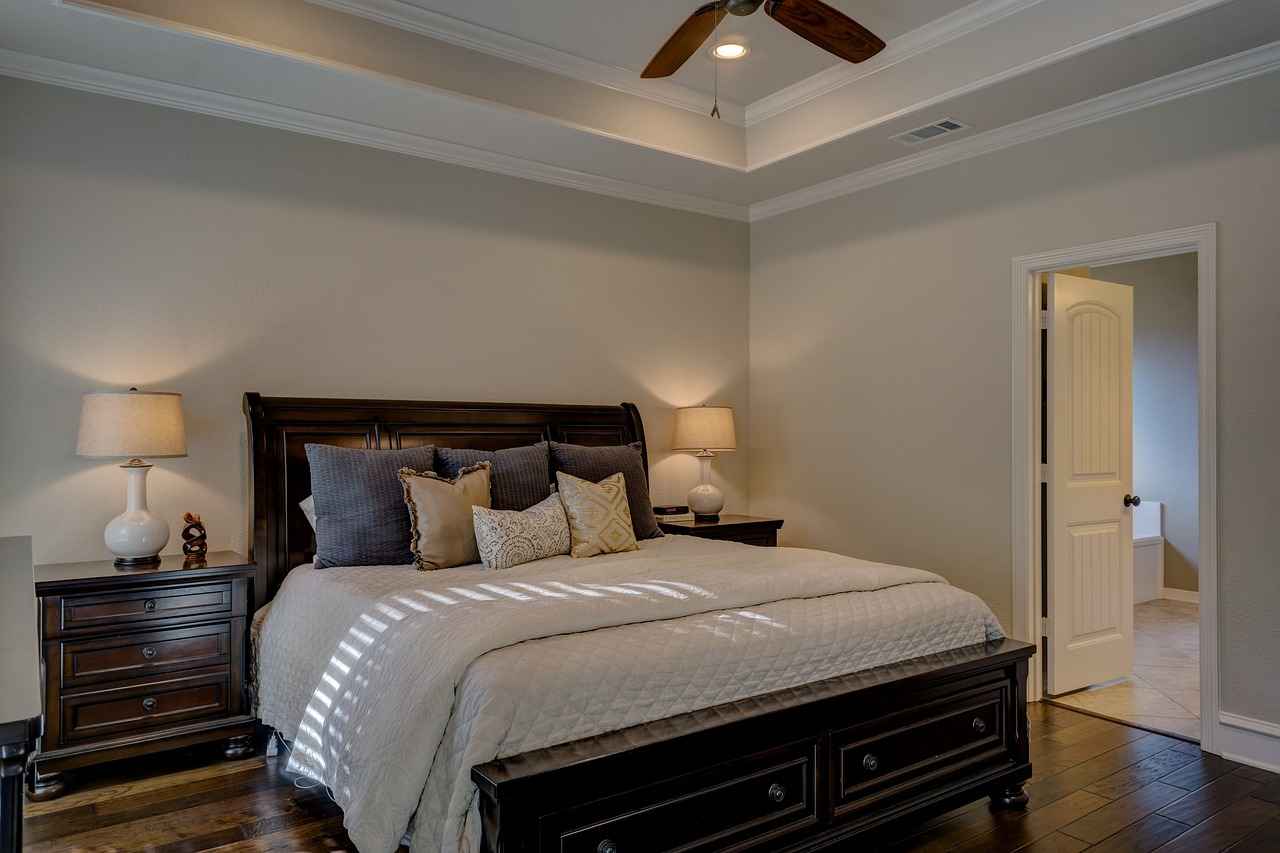
6. Finishes and Stains: Enhancing Wooden Beds
Finishes and Stains: Enhancing Wooden Beds
The finish or stain applied to wooden beds plays a crucial role in both enhancing their visual appeal and protecting the wood from wear and tear. With a variety of options available, you can easily find a finish that aligns with your personal style and the overall aesthetic of your bedroom.
1. Understanding the Importance of Finishes
Applying a finish to wooden beds not only beautifies the natural grain and color of the wood but also serves as a protective layer against moisture, dirt, and scratches. This protection is essential for maintaining the bed’s integrity over time.
2. Types of Finishes
- Natural Finishes: These finishes, such as oils and waxes, enhance the wood’s natural beauty, providing a warm and organic look. They are ideal for those who prefer a rustic or traditional style.
- Painted Finishes: For a more contemporary look, painted finishes offer a wide range of colors, allowing you to match your bed with existing decor or create a bold statement piece.
- Stained Finishes: Stains can deepen the wood’s color while still showcasing its grain, providing a rich appearance that complements various design styles.
3. Choosing the Right Finish
When selecting a finish, consider factors such as the type of wood, the desired aesthetic, and the level of maintenance you are willing to commit to. Some finishes require more upkeep than others, so it’s essential to choose one that fits your lifestyle.
4. Application Techniques
Proper application of finishes is key to achieving a beautiful result. Techniques may include brushing, spraying, or wiping on the finish, each offering different outcomes. Always follow the manufacturer’s instructions for the best results.
5. Maintenance of Finished Surfaces
To keep your wooden bed looking its best, regular maintenance is necessary. This includes cleaning with appropriate solutions and reapplying finishes as needed to protect the wood and maintain its beauty.
Conclusion
In summary, the finish or stain applied to wooden beds is vital for both enhancing aesthetics and ensuring longevity. By understanding the different types of finishes available and how to apply and maintain them, you can enjoy a beautiful and durable wooden bed for years to come.
6.1. Natural Finishes
Natural finishes are an essential aspect of wooden bed designs, offering a unique way to showcase the inherent beauty of the wood. These finishes not only enhance the visual appeal of the wood but also provide a layer of protection while maintaining its organic essence. When applied correctly, natural finishes allow the wood’s grain and color to shine through, creating a warm and inviting atmosphere in any bedroom.
One of the primary advantages of using natural finishes is their ability to highlight the unique characteristics of different wood species. For instance, oak can display a stunning pattern of rays and flecks, while walnut offers rich, dark hues with a beautiful contrast of lighter sapwood. By opting for a natural finish, you can ensure that these features are accentuated rather than obscured, providing a truly authentic look.
Moreover, natural finishes are often derived from environmentally friendly materials, making them a sustainable choice for eco-conscious consumers. Products like linseed oil, tung oil, and beeswax not only protect the wood but also contribute to a healthier indoor environment by reducing the presence of harmful chemicals commonly found in synthetic finishes.
When selecting a natural finish, consider the desired effect you wish to achieve. A matte finish can provide a more rustic and understated look, while a glossy finish can add a touch of elegance and sophistication. Additionally, the application process can vary; some finishes may require multiple coats for optimal results, while others may be easier to apply and maintain.
In conclusion, natural finishes play a pivotal role in enhancing the aesthetic and functional qualities of wooden beds. By choosing a natural finish, you not only celebrate the wood’s natural beauty but also contribute to an environmentally friendly approach to interior design.
6.2. Painted and Stained Finishes
Painted and stained finishes are essential elements in the world of wooden bed designs, providing homeowners with a range of customization options that can truly transform the look of their bedroom. These finishes not only enhance the aesthetic appeal of a bed but also allow for a seamless integration with existing decor or the creation of a striking focal point.
When considering painted finishes, the possibilities are virtually endless. From soft pastels to bold hues, paint can completely alter the visual impact of a wooden bed. For instance, a vibrant blue or deep green can add a splash of color to a neutral room, making the bed a statement piece that draws the eye. On the other hand, stained finishes offer a way to showcase the natural beauty of the wood grain while adding depth and richness. Stains can range from light oak to dark walnut, allowing homeowners to choose a shade that complements their furniture and decor.
Moreover, the choice between paint and stain can depend on personal style preferences and the overall theme of the bedroom. Painted beds tend to fit well in modern or eclectic spaces, while stained beds often resonate with traditional or rustic aesthetics. This versatility in finishes means that homeowners can easily match their bed to their existing decor or even create a bold statement piece that stands out.
Additionally, the application of these finishes can also provide a protective layer for the wood, ensuring durability and longevity. Properly finished wooden beds resist scratches and wear, maintaining their beauty over time. When selecting a finish, it’s crucial to consider not only the color but also the type of finish, such as matte, satin, or glossy, which can further influence the overall appearance and feel of the bed.
In conclusion, painted and stained finishes are vital for customizing wooden beds, enabling homeowners to express their unique style while enhancing the functionality and aesthetic of their bedrooms.
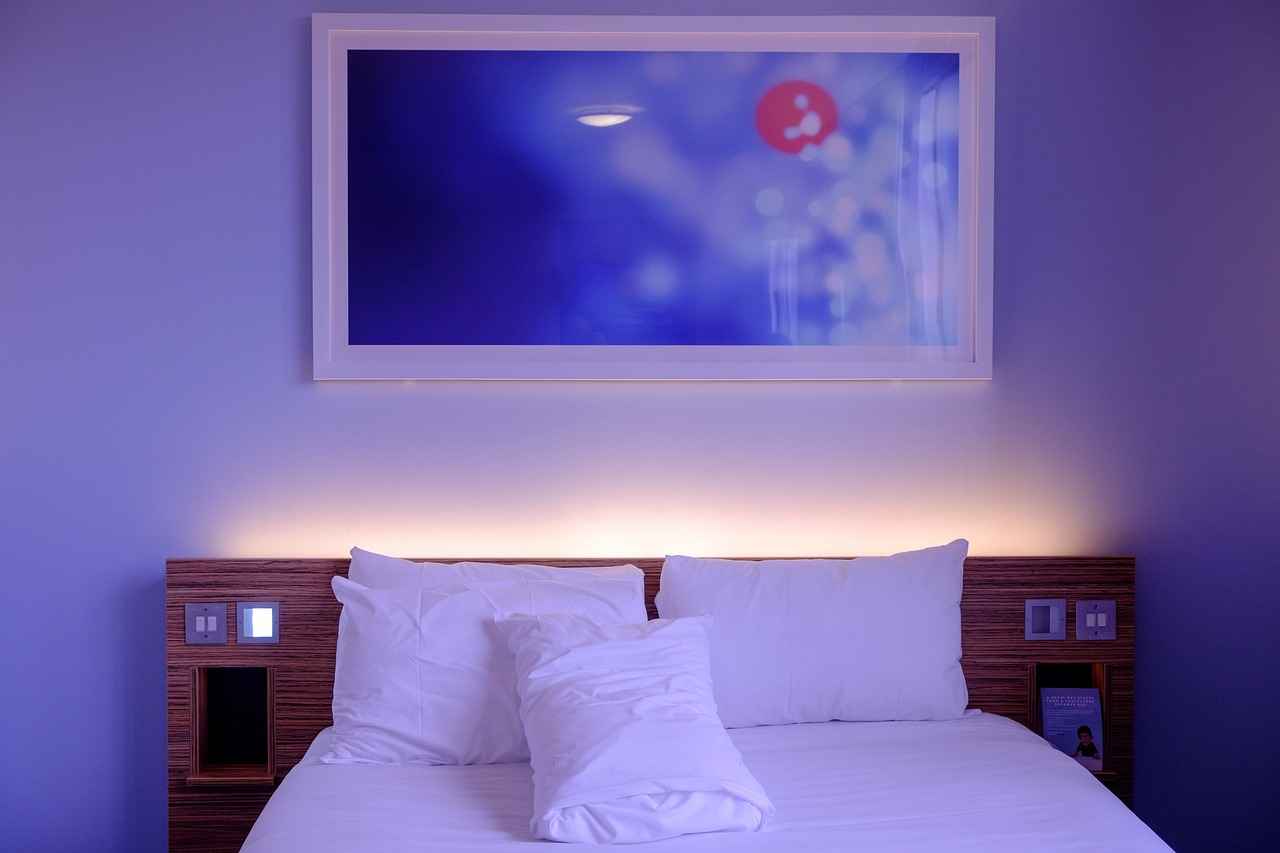
7. Maintenance Tips for Wooden Beds
Proper maintenance is essential to prolong the life of your wooden bed. Regular cleaning and care can keep your bed looking beautiful for years to come. By following a few simple maintenance tips, you can ensure that your wooden bed remains a stunning focal point in your bedroom.
- Regular Cleaning: Dust your wooden bed weekly using a soft cloth or microfiber duster. This prevents dust buildup and helps maintain its natural shine.
- Use Gentle Cleaners: When deeper cleaning is necessary, opt for a mild soap solution. Avoid harsh chemicals that can damage the wood’s finish.
- Conditioning the Wood: Every six months, apply a wood conditioner or polish to nourish the wood and enhance its luster. This helps prevent drying and cracking.
- Check for Loose Screws: Periodically inspect the bed frame for any loose screws or joints. Tightening them can prevent structural damage and ensure stability.
- Protect from Moisture: Keep your wooden bed away from direct sunlight and moisture. Use a dehumidifier in damp areas to prevent warping.
- Repairing Scratches: If scratches occur, use a wood filler or touch-up pen to restore the bed’s surface. This simple fix can keep your bed looking new.
By implementing these maintenance tips, you can enjoy the beauty and durability of your wooden bed for many years. Not only will it enhance your bedroom’s aesthetic, but it will also provide you with a comfortable and inviting space to rest.
7.1. Cleaning Wooden Beds
Maintaining the beauty and integrity of your wooden bed requires regular care and attention. One of the most important aspects of this maintenance is cleaning. Using the right techniques can ensure that your bed remains in excellent condition without damaging the finish.
- Choose Gentle Cleaning Solutions: Opt for mild, non-toxic cleaning solutions that are specifically designed for wood. Avoid harsh chemicals that can strip away the protective finish and lead to long-term damage.
- Use Soft Cloths: When cleaning, always use a soft, lint-free cloth. Microfiber cloths are an excellent choice as they effectively trap dust and dirt without scratching the surface.
- Dust Regularly: Make it a habit to dust your wooden bed at least once a week. This prevents the buildup of dust and grime, which can dull the wood’s finish over time.
- Wipe with a Damp Cloth: For deeper cleaning, slightly dampen the cloth with water or a wood-safe cleaner. Ensure that the cloth is not too wet, as excess moisture can warp the wood.
- Dry Thoroughly: After cleaning, always dry the surface with a clean, dry cloth to prevent moisture from seeping into the wood.
In addition to regular cleaning, consider the following tips to maintain your wooden bed:
- Avoid Direct Sunlight: Position your bed away from direct sunlight to prevent fading and drying out of the wood.
- Use Coasters and Mats: Protect the surface from scratches and stains by using coasters for drinks and mats for decorative items.
- Regular Inspections: Periodically check for signs of wear or damage, such as scratches or loose joints, and address these issues promptly.
By following these simple yet effective cleaning tips, you can ensure that your wooden bed remains a stunning centerpiece in your bedroom for years to come.
7.2. Repairing Scratches and Dents
Wooden beds are a beautiful addition to any bedroom, but over time, they may experience minor wear and tear, such as scratches and dents. Fortunately, repairing these imperfections is a straightforward process that can help maintain your bed’s aesthetic appeal and longevity.
To begin with, it’s essential to assess the extent of the damage. For minor scratches, wood fillers or touch-up pens can be incredibly effective. These products are specifically designed to blend seamlessly with the wood, restoring its original look. Here’s a step-by-step guide on how to repair scratches and dents:
- Step 1: Clean the area around the scratch with a soft cloth to remove any dust or debris.
- Step 2: If using a wood filler, apply a small amount directly into the scratch using a putty knife. Make sure to overfill slightly, as it can shrink when it dries.
- Step 3: For touch-up pens, simply follow the instructions on the product. Typically, you’ll apply the pen directly to the scratch, allowing it to dry.
- Step 4: Once the filler or pen is dry, gently sand the area with fine-grit sandpaper to ensure a smooth finish. Be careful not to sand too much, as you could damage the surrounding wood.
- Step 5: Finally, apply a matching wood finish or polish to protect the area and restore its luster.
For dents, a different approach may be necessary. You can use a damp cloth and an iron to help raise the wood fibers back to their original position:
- Step 1: Place a damp cloth over the dent.
- Step 2: Heat an iron on a low setting and gently press it over the cloth for a few seconds. The steam will help expand the wood fibers.
- Step 3: Allow the area to cool, then remove the cloth and assess the dent. Repeat if necessary.
By following these simple steps, you can keep your wooden bed looking as good as new. Regular maintenance not only enhances its visual appeal but also extends its lifespan, ensuring you can enjoy your beautiful bed for years to come.
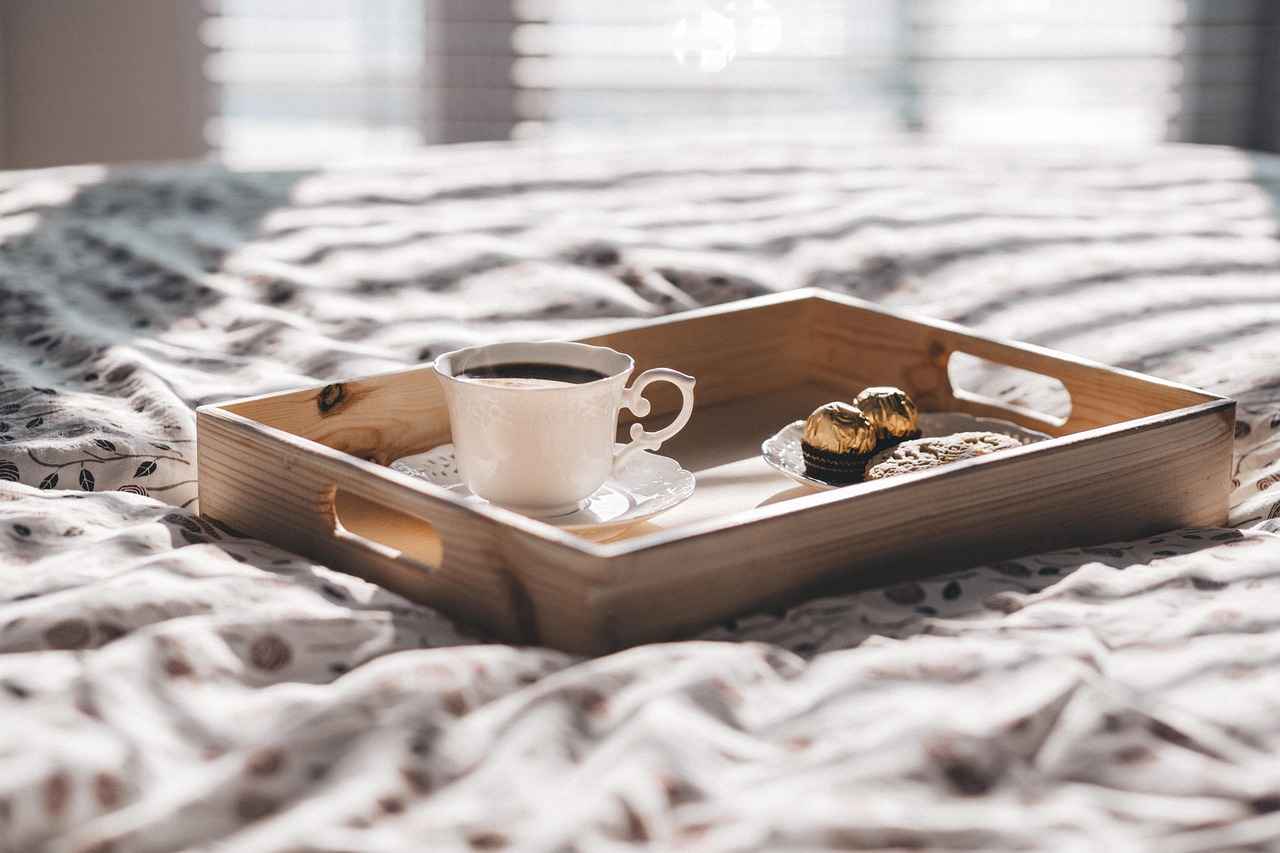
8. Budgeting for Your Wooden Bed
Budgeting for Your Wooden Bed is an essential step in ensuring that you make a wise investment for your bedroom. Understanding the various costs associated with wooden beds can help you effectively plan your budget and find a bed that meets your needs without overspending.
The price of wooden beds can fluctuate significantly based on several factors, including materials, craftsmanship, and design complexity. Here’s a breakdown of what to consider:
| Factor | Description | Price Range |
|---|---|---|
| Materials | Hardwoods (e.g., oak, maple) tend to be more expensive due to their durability, while softwoods (e.g., pine) are generally more affordable. | $300 – $2,000+ |
| Craftsmanship | Handcrafted beds often come with a higher price tag, reflecting the skill and time involved in their creation. | $500 – $3,000+ |
| Design Complexity | Intricate designs or custom features can increase costs significantly. | $400 – $2,500+ |
When considering your budget, it’s also important to think about long-term value. Investing in a high-quality wooden bed may seem costly upfront, but it can save you money over time due to its durability and timeless appeal. Here are some budget-friendly tips:
- Research: Look for sales or discounts at local furniture stores and online retailers.
- Consider Alternatives: Explore options like reclaimed wood or eco-friendly materials that can provide aesthetic appeal at a lower cost.
- Evaluate Your Needs: Assess your space and choose a size and style that complements your room without unnecessary frills.
In conclusion, understanding the costs associated with wooden beds allows you to budget effectively and make informed decisions. By evaluating the factors that influence pricing and exploring options, you can find a beautiful and functional wooden bed that fits your financial plan.
8.1. Affordable Wooden Bed Options
Affordable Wooden Bed Options
When it comes to furnishing your bedroom, wooden beds offer a perfect blend of style and durability. Fortunately, there are many budget-friendly wooden bed options available, allowing you to find a stylish bed without breaking the bank. Here are some insights into how you can choose an affordable wooden bed that meets your needs and complements your space.
- Explore Different Styles: Wooden beds come in various styles, from rustic to modern. Consider what aesthetic fits your bedroom best. For instance, a platform bed may offer a sleek, contemporary look, while a canopy bed adds a touch of elegance.
- Material Matters: Different types of wood can affect the price. Pine is often more affordable than hardwoods like oak or maple, making it a great option for budget-conscious shoppers. Additionally, look for beds made from engineered wood, which can provide a similar appearance at a lower cost.
- Consider DIY Options: If you’re handy, consider building your own wooden bed frame. There are many DIY plans available online that can guide you through the process, allowing you to customize your bed to fit your unique style.
- Shop Sales and Discounts: Keep an eye out for seasonal sales, clearance events, and online discounts. Many retailers offer significant savings on wooden beds during holiday sales or end-of-season clearances.
- Check Out Thrift Stores and Online Marketplaces: You can often find gently used wooden beds at thrift stores, garage sales, or online marketplaces like Craigslist and Facebook Marketplace. This can be a great way to snag a quality piece at a fraction of the retail price.
By exploring these options, you can find a stylish wooden bed that fits your budget and enhances your bedroom’s overall aesthetic. Remember, investing in a quality bed is essential for a good night’s sleep, so prioritize comfort and durability within your budget.
8.2. Investing in High-Quality Wooden Beds
Investing in high-quality wooden beds is a decision that offers numerous benefits, combining aesthetic appeal with long-lasting durability. When you choose a wooden bed crafted with superior materials, you are not just purchasing furniture; you are making a wise investment in your home and well-being.
One of the primary reasons to invest in high-quality wooden beds is their superior craftsmanship. Unlike mass-produced alternatives, these beds are often handmade or crafted with meticulous attention to detail. This level of craftsmanship ensures that each piece is unique and built to withstand the rigors of daily use. The joints are typically reinforced, and the finish is designed to resist scratches and wear, contributing to a bed that can last for decades.
Moreover, high-quality wooden beds are made from premium materials that enhance their durability. Hardwoods such as oak, maple, and cherry not only provide strength but also develop a beautiful patina over time. This means that your investment will not only hold up against the test of time but will also become more visually appealing as it ages.
In addition to longevity, investing in a high-quality wooden bed can also improve your sleep quality. A well-constructed bed provides adequate support for your mattress, which can lead to better sleep posture and overall comfort. This is especially important for those who suffer from back pain or other sleep-related issues.
When considering your investment, it’s essential to evaluate the value for money. While the initial cost may be higher than cheaper alternatives, the long-term benefits—such as lower replacement costs and enhanced comfort—make high-quality wooden beds a more economical choice in the long run.
In conclusion, investing in high-quality wooden beds is a decision that pays off in numerous ways. From their durability and craftsmanship to their positive impact on sleep quality, these beds offer both style and functionality. By choosing wisely, you can ensure that your investment will provide comfort and beauty for years to come.

9. Where to Buy Wooden Beds
Finding the right place to purchase your wooden bed is essential for ensuring quality and value. With a variety of options available, it’s crucial to explore both retailers and online platforms to make an informed choice that aligns with your preferences and budget.
- 9.1. Online Retailers
Online retailers have revolutionized the way we shop for furniture, providing an extensive selection of wooden beds at competitive prices. Websites like Amazon, Wayfair, and Overstock feature customer reviews, which can guide your decision-making process. Additionally, many online stores offer free shipping and easy return policies, making it convenient to shop from the comfort of your home.
- 9.2. Local Furniture Stores
Visiting local furniture stores is another excellent option for purchasing wooden beds. This allows you to physically see and test the beds, ensuring they meet your comfort and quality standards. Local stores often provide personalized service, helping you find the perfect bed that suits your style and needs. Additionally, shopping locally supports small businesses and the community.
- 9.3. Specialty Shops
For those seeking unique designs, specialty shops that focus on handcrafted or custom wooden beds can be a great choice. These retailers often use high-quality materials and offer bespoke options tailored to your specifications, ensuring a one-of-a-kind piece that enhances your bedroom’s aesthetic.
- 9.4. Second-Hand Stores and Marketplaces
Consider checking out second-hand stores, thrift shops, or online marketplaces like Facebook Marketplace and Craigslist. You might find well-maintained wooden beds at a fraction of the original price. However, ensure to inspect the bed for any damages or wear before making a purchase.
In conclusion, whether you prefer the convenience of online shopping or the tactile experience of visiting a local store, exploring various options will help you find the perfect wooden bed that meets both your style and budget requirements. Don’t forget to read customer reviews and check return policies to ensure a satisfactory purchase.
9.1. Online Retailers
Online Retailers have revolutionized the way consumers shop for wooden beds, providing a vast array of options that cater to diverse tastes and budgets. With just a few clicks, you can explore an extensive selection of designs, materials, and sizes from the comfort of your home.
One significant advantage of shopping online is the ability to read customer reviews. These reviews can be invaluable in guiding your decision-making process. They provide insights into the quality, comfort, and durability of various wooden beds, helping you make an informed choice. Many online retailers also offer detailed descriptions and images, allowing you to visualize how a bed will fit into your space.
Furthermore, online platforms often feature competitive pricing and exclusive deals that may not be available in local stores. This can be particularly beneficial for budget-conscious shoppers looking for high-quality wooden beds without overspending. Additionally, many online retailers provide options for free shipping or easy returns, enhancing the overall shopping experience.
When considering online purchases, it’s essential to choose reputable retailers. Look for those with positive customer feedback, clear return policies, and secure payment options. Some popular online platforms include:
- Amazon – Offers a wide range of wooden beds with extensive customer reviews.
- Wayfair – Known for its vast selection and frequent sales.
- Overstock – Features discounted prices on various wooden bed styles.
- Bed Bath & Beyond – Offers both online and in-store options, often with promotional discounts.
In conclusion, online retailers provide a convenient and efficient way to shop for wooden beds. By leveraging customer reviews and taking advantage of competitive pricing, you can find the perfect bed that meets your style and budget needs.
9.2. Local Furniture Stores
Exploring Local Furniture Stores: A Hands-On Experience
When it comes to selecting the perfect wooden bed for your bedroom, visiting local furniture stores offers a unique advantage that online shopping simply cannot replicate. This hands-on experience allows you to see, touch, and test various wooden bed designs in person, providing invaluable insights into their comfort and quality.
One of the primary benefits of visiting these stores is the ability to assess comfort levels firsthand. Laying on a bed allows you to gauge its firmness and support, ensuring that it meets your specific sleeping preferences. Additionally, you can evaluate the quality of craftsmanship by inspecting the materials used and the overall construction of the bed frame.
In local furniture stores, you will find a wide range of styles and finishes that might not be available online. From rustic designs to sleek modern aesthetics, seeing these beds in person helps you visualize how they will fit into your home decor. Moreover, you can often find unique pieces that are handcrafted by local artisans, adding a personal touch to your bedroom.
Another significant advantage is the opportunity to ask questions directly to knowledgeable staff. They can provide insights on the durability of different wood types, maintenance tips, and even recommendations based on your specific needs. This personalized service can help you make a more informed decision.
Additionally, purchasing from local stores supports your community and can lead to a more sustainable choice, as many local businesses prioritize eco-friendly practices.
In conclusion, visiting local furniture stores not only enhances your shopping experience but also empowers you to make a well-informed choice regarding your wooden bed. By taking the time to explore these options in person, you can ensure that your final selection is both comfortable and of high quality.

10. Custom-Made Wooden Beds
Custom-Made Wooden Beds: Tailored Elegance for Your Bedroom
When it comes to creating a unique sanctuary in your home, custom-made wooden beds stand out as a premier choice. These beds not only serve as functional pieces of furniture but also as expressions of your personal style. By opting for a custom design, you can ensure that your bed perfectly aligns with your spatial requirements and aesthetic preferences.
1. Why Choose Custom-Made Wooden Beds?
- Personalization: Custom beds allow you to select the wood type, finish, and design elements that resonate with your style.
- Perfect Fit: Tailoring dimensions ensures that your bed fits seamlessly into your bedroom layout, maximizing space and comfort.
- Quality Craftsmanship: Working with skilled artisans guarantees high-quality materials and construction, resulting in a durable product.
2. Design Considerations for Your Custom Bed
- Style: Consider whether you prefer a modern, rustic, or traditional design to match your existing decor.
- Functionality: Think about additional features such as built-in storage or adjustable heights that can enhance usability.
- Material Choices: Select from a variety of woods, such as oak, walnut, or reclaimed wood, each offering distinct aesthetics and durability.
3. Collaborating with a Carpenter
Engaging with a skilled carpenter is essential for achieving your vision. Provide them with detailed specifications and inspiration images to ensure the final product meets your expectations. A good carpenter will also offer insights on structural integrity and design feasibility.
4. The Benefits of Customization
- Unique Designs: Your bed will be one-of-a-kind, reflecting your individuality and taste.
- Enhanced Comfort: Custom sizing can accommodate specific mattress types and sleeping preferences, promoting better sleep quality.
- Investment Value: A well-crafted custom bed can be a long-term investment that adds value to your home.
In conclusion, opting for a custom-made wooden bed is an excellent way to enhance your bedroom’s aesthetic and functionality. By considering your design preferences and collaborating closely with a skilled carpenter, you can create a stunning centerpiece that will provide comfort and style for years to come.
10.1. Working with a Carpenter
Working with a Carpenter
When it comes to crafting a bespoke wooden bed, collaborating with a skilled carpenter can be a transformative experience. Not only does this partnership allow you to create a piece that reflects your personal style, but it also ensures that the bed meets your specific needs, both functionally and aesthetically.
A skilled carpenter brings a wealth of knowledge and craftsmanship to the table, allowing for a customized design that incorporates your unique preferences. Here are some key benefits of working with a carpenter:
- Personalization: You can choose everything from the type of wood to the bed’s dimensions, ensuring it fits perfectly in your space.
- Quality Craftsmanship: A carpenter’s expertise guarantees that your bed is built to last, using high-quality materials and techniques.
- Design Flexibility: Whether you envision a modern platform bed or a classic canopy design, a carpenter can bring your vision to life.
- Attention to Detail: Custom beds often feature intricate details that mass-produced options lack, adding character and charm to your bedroom.
Before beginning your project, consider the following design elements:
- Size: Ensure the bed is proportionate to your room and meets your sleeping needs.
- Style: Decide on a style that complements your existing decor, whether it’s rustic, modern, or something in between.
- Functionality: Think about additional features such as built-in storage or adjustable frames that enhance usability.
In conclusion, working with a carpenter not only allows you to create a unique wooden bed but also provides an opportunity to invest in a high-quality piece that will serve as a focal point in your bedroom for years to come. By considering your personal style and specific needs, you can collaborate effectively to achieve a result that is both beautiful and practical.
10.2. Design Considerations for Custom Beds
Designing a custom bed involves careful consideration of several key factors to ensure that the final product not only meets your personal style but also enhances the overall aesthetic of your bedroom. Here are some important elements to keep in mind:
- Size: The dimensions of your bed should be tailored to fit your bedroom space. Measure the area where the bed will be placed, taking into account other furniture and walking space. Standard sizes include twin, full, queen, and king, but custom sizes can be designed to fit unique room layouts.
- Style: The style of your custom bed should complement the existing decor of your bedroom. Whether you prefer a modern look with clean lines or a rustic appearance with natural finishes, the bed’s design should harmonize with the overall theme of the room.
- Functionality: Consider how you will use the bed. Do you need built-in storage for linens and blankets? Would a platform bed or a canopy design better suit your needs? Think about how the bed will function in your daily life.
- Material: The choice of material significantly affects both the appearance and durability of the bed. Options range from hardwoods like oak and maple to softer woods like pine. Additionally, eco-friendly materials such as bamboo or reclaimed wood are great choices for sustainability.
- Finishes: The finish applied to your custom bed can greatly enhance its visual appeal. Natural finishes highlight the wood’s grain, while painted or stained options allow for more personalization. Choose a finish that aligns with your style preferences and maintenance capabilities.
By carefully considering these factors, you can create a custom bed that not only serves as a functional piece of furniture but also becomes a stunning focal point in your bedroom. Remember, the right bed can transform your space and elevate your overall sleeping experience.
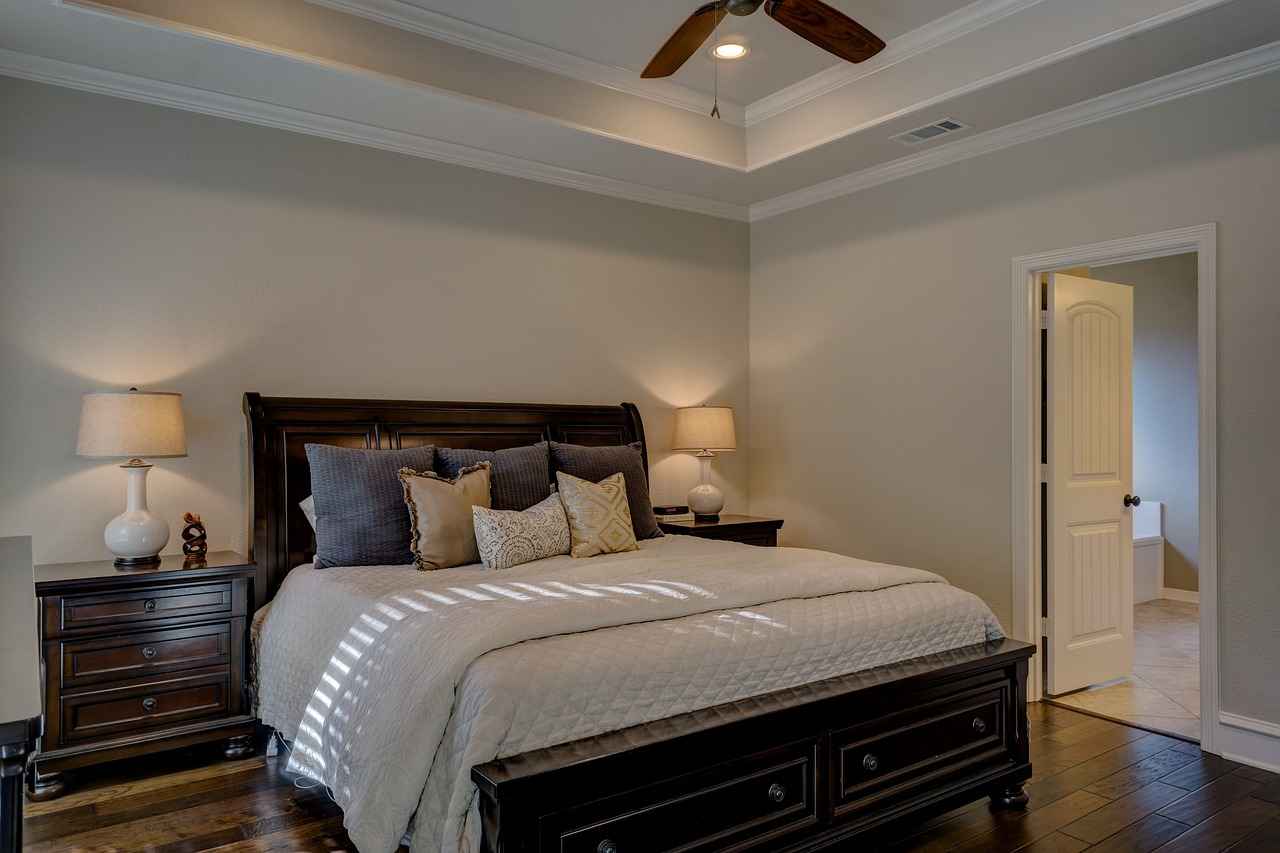
11. Trends in Wooden Bed Designs
Staying updated on the latest trends in wooden bed designs can significantly inspire your choices, allowing you to create a modern yet timeless bedroom. As the world of interior design evolves, wooden beds continue to embrace innovative styles and functionalities, catering to diverse tastes and preferences.
1. Embracing Sustainability
One of the most prominent trends today is the focus on sustainability. Eco-friendly materials, such as reclaimed wood and bamboo, are gaining popularity. These materials not only reduce environmental impact but also add a unique character to your bedroom. By opting for sustainable wooden beds, you can make a stylish statement while being kind to the planet.
2. Multifunctional Designs
As living spaces become more compact, multifunctional furniture is becoming essential. Wooden beds with built-in storage solutions or convertible features are increasingly sought after. These designs maximize space and functionality, making them ideal for smaller bedrooms. For instance, beds with drawers underneath or those that convert into sofas offer practicality without sacrificing style.
3. Minimalist Aesthetics
The minimalist design trend continues to influence wooden bed designs. Clean lines, simple shapes, and neutral colors create a serene environment. This style emphasizes the beauty of the wood itself, allowing its natural grain and texture to shine through. A minimalist wooden bed can serve as a stunning focal point in any bedroom.
4. Customization Options
More homeowners are seeking personalized solutions for their bedrooms. Custom-made wooden beds allow for unique designs that reflect individual tastes. Whether you prefer a specific wood type, finish, or size, working with a skilled carpenter can help you create a bed that fits your vision perfectly.
5. Combining Traditional and Modern Elements
Another trend is the blend of traditional craftsmanship with modern design elements. This fusion creates a timeless appeal, making wooden beds versatile enough to fit various decor styles. For example, a rustic wooden bed frame paired with contemporary bedding can create a harmonious balance that feels both fresh and classic.
In conclusion, keeping abreast of the latest trends in wooden bed designs can help you make informed choices that enhance your bedroom’s aesthetic and functionality. Whether you lean towards sustainability, multifunctionality, or a minimalist look, there are endless possibilities to explore. By choosing a wooden bed that resonates with your style, you can create a space that is both modern and timeless.
11.1. Sustainable Designs
Sustainable designs in home furnishings are becoming increasingly significant as more homeowners seek to reduce their environmental impact without sacrificing style. Eco-friendly materials and designs not only reflect a commitment to sustainability but also offer a unique aesthetic that can enhance any living space.
When considering sustainable designs, it’s essential to explore the various materials available. Many manufacturers are now utilizing reclaimed wood, which is sourced from old structures, reducing the need for new lumber and minimizing deforestation. This not only gives a rustic charm to furniture but also helps in preserving the planet’s resources.
Another popular option is bamboo, known for its rapid growth and renewability. Bamboo furniture is not only durable but also lightweight, making it an excellent choice for modern designs. Its natural look can complement various interior styles, from contemporary to traditional.
- Recycled Metal: Used in bed frames and accents, recycled metal furniture is sturdy and often features unique designs that add character to a room.
- Organic Fabrics: For upholstered items, organic cotton or linen is a fantastic choice. These materials are grown without harmful pesticides, making them safer for both the environment and your home.
- Low-VOC Finishes: Choosing furniture finished with low volatile organic compounds (VOCs) can significantly improve indoor air quality, making your home healthier.
Incorporating sustainable designs into your home doesn’t mean compromising on style. Many eco-friendly options are available that are both aesthetically pleasing and functional. For instance, modular designs allow for flexibility and adaptability, catering to changing needs while minimizing waste.
Ultimately, the shift towards sustainable designs is not just a trend; it reflects a growing awareness of our environmental responsibilities. By choosing eco-friendly materials and designs, homeowners can create stylish spaces that align with their values and contribute to a healthier planet.
In conclusion, sustainable designs offer a beautiful blend of functionality and eco-consciousness. As you explore options for your home, consider how these materials can enhance your living space while supporting a more sustainable future.
11.2. Multifunctional Wooden Beds
Multifunctional wooden beds are becoming increasingly popular, especially in urban settings where space is at a premium. These innovative designs not only serve as a sleeping area but also incorporate storage solutions and convertible features, making them a practical choice for modern living.
One of the primary advantages of multifunctional wooden beds is their ability to maximize space efficiency. For instance, beds with built-in storage drawers can help keep your bedroom organized by providing a place for linens, clothes, or other personal items. This eliminates the need for additional furniture, which can clutter smaller rooms.
Another trend in multifunctional designs includes convertible beds that can transform into sofas or daybeds. These versatile options are ideal for studio apartments or guest rooms, allowing homeowners to adapt their space according to their needs. With a simple adjustment, a bed can become a comfortable seating area during the day, providing flexibility for various activities.
Moreover, many multifunctional wooden beds are designed with aesthetics in mind. They come in various styles, from rustic to modern, ensuring that you do not have to compromise on design for functionality. The use of high-quality woods, such as oak or walnut, not only adds durability but also enhances the overall look of your bedroom.
When considering a multifunctional wooden bed, it’s essential to evaluate the size and layout of your room. Measure the available space to ensure that the bed will fit comfortably and allow for easy movement around the room. Additionally, consider the weight capacity and the ease of converting the bed into its multifunctional state.
In conclusion, multifunctional wooden beds offer a smart solution for those looking to optimize their living spaces without sacrificing style. With their blend of practicality and aesthetic appeal, these beds are a worthwhile investment for any home.
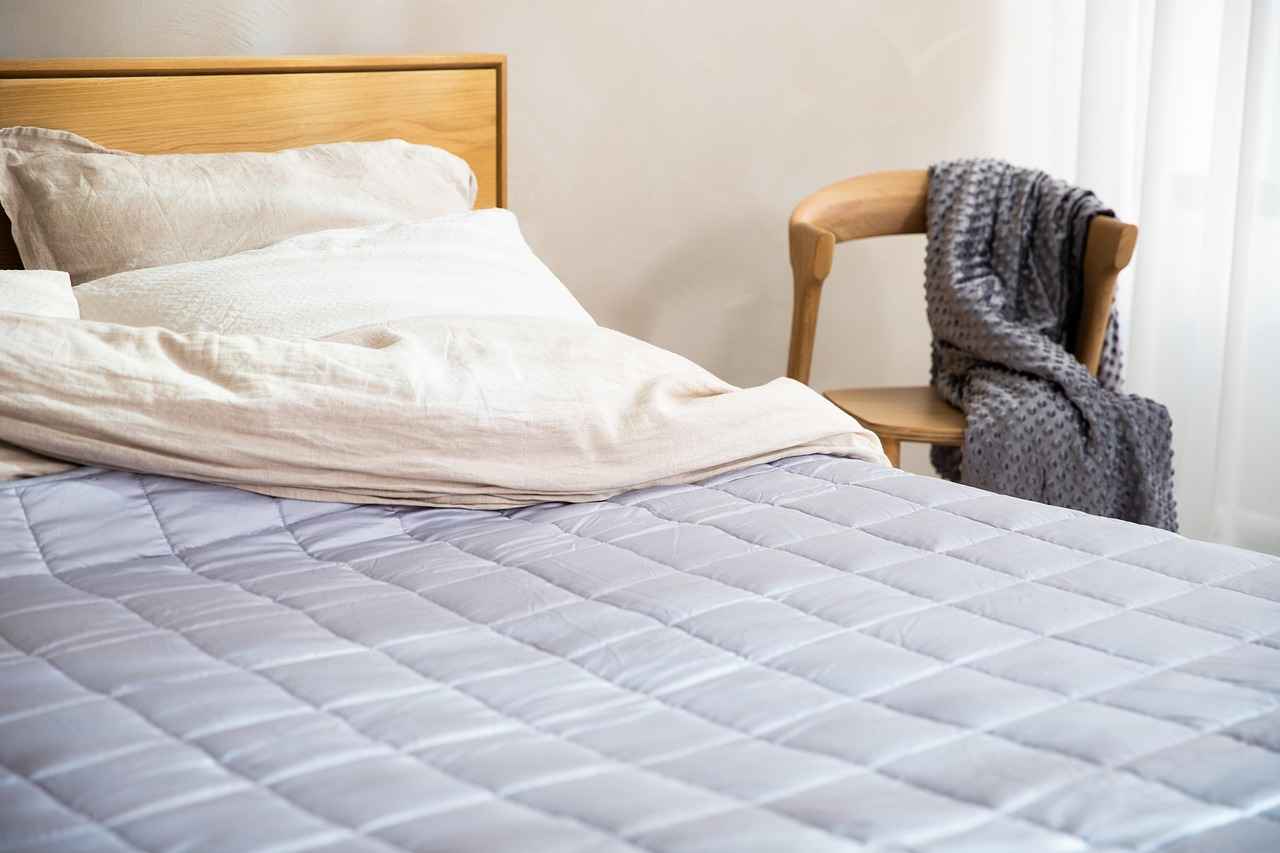
12. Conclusion: The Enduring Charm of Wooden Beds
Wooden beds have long been celebrated for their timeless elegance and robust construction, making them a popular choice in bedrooms across the globe. With their unique charm and versatility, these beds can seamlessly blend into various interior styles, enhancing the overall aesthetic of your home.
When selecting a wooden bed, it is essential to consider the type of wood used in its construction. Hardwoods, such as oak and maple, are prized for their durability and long-lasting appeal. In contrast, softwoods like pine tend to be more affordable and lightweight, making them suitable for various designs. Eco-friendly options, such as bamboo or reclaimed wood, are also gaining popularity among environmentally conscious consumers.
Wooden beds come in a variety of styles, from rustic to modern, each offering distinct advantages. Rustic wooden beds often feature natural finishes that evoke a cozy atmosphere, while modern designs emphasize clean lines and minimalism. Understanding the different styles can help you choose a bed that not only meets your aesthetic preferences but also complements your bedroom decor.
Another crucial factor to consider is the size of the bed. Standard sizes, including twin, full, queen, and king, cater to a wide range of needs. For those with unique space requirements, custom bed sizes can be designed to fit specific dimensions, ensuring optimal comfort and functionality.
In terms of maintenance, regular care is vital to prolong the life of your wooden bed. Simple cleaning techniques and occasional touch-ups can keep your bed looking its best for years to come. Additionally, investing in a high-quality wooden bed can yield long-term value, as these pieces often feature superior craftsmanship and materials.
In conclusion, wooden beds remain a classic choice for any bedroom, combining beauty, durability, and versatility. By exploring various styles and options, you can find the perfect wooden bed that complements your home and meets your personal needs.
Frequently Asked Questions
- What are the benefits of choosing a wooden bed?
Wooden beds offer a timeless aesthetic, durability, and versatility that can complement any bedroom style. They are also eco-friendly options if sourced sustainably.
- How do I choose the right type of wood for my bed?
Consider the characteristics of different woods. Hardwoods like oak and maple are durable, while softwoods like pine are lighter and more affordable. Think about your budget and desired longevity.
- What are the standard sizes for wooden beds?
Standard sizes include twin, full, queen, and king. It’s vital to measure your room and consider your sleeping preferences to choose the right size.
- Can I customize my wooden bed design?
Absolutely! Custom-made wooden beds can be tailored to your specifications, ensuring a perfect fit for your space and personal style.
- What maintenance do wooden beds require?
Regular cleaning with gentle solutions and soft cloths is essential. Additionally, minor scratches can be repaired with wood fillers to keep your bed looking pristine.
- Where can I buy quality wooden beds?
You can find quality wooden beds at local furniture stores or online retailers. Online options often provide customer reviews to help guide your choice.


